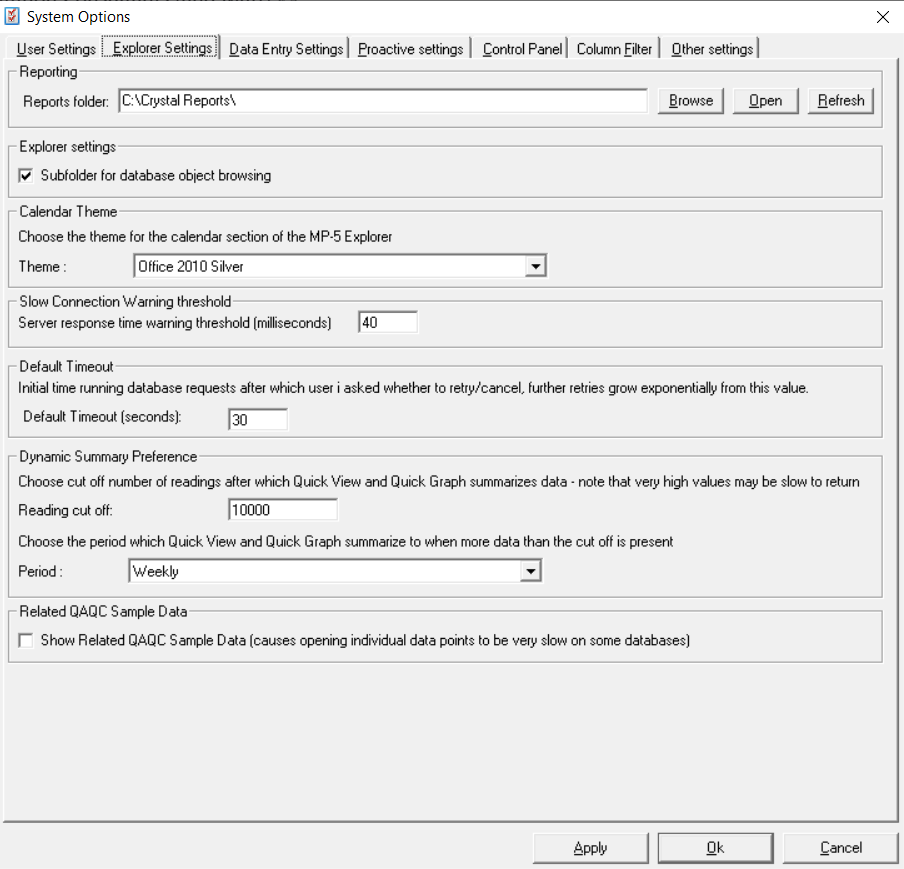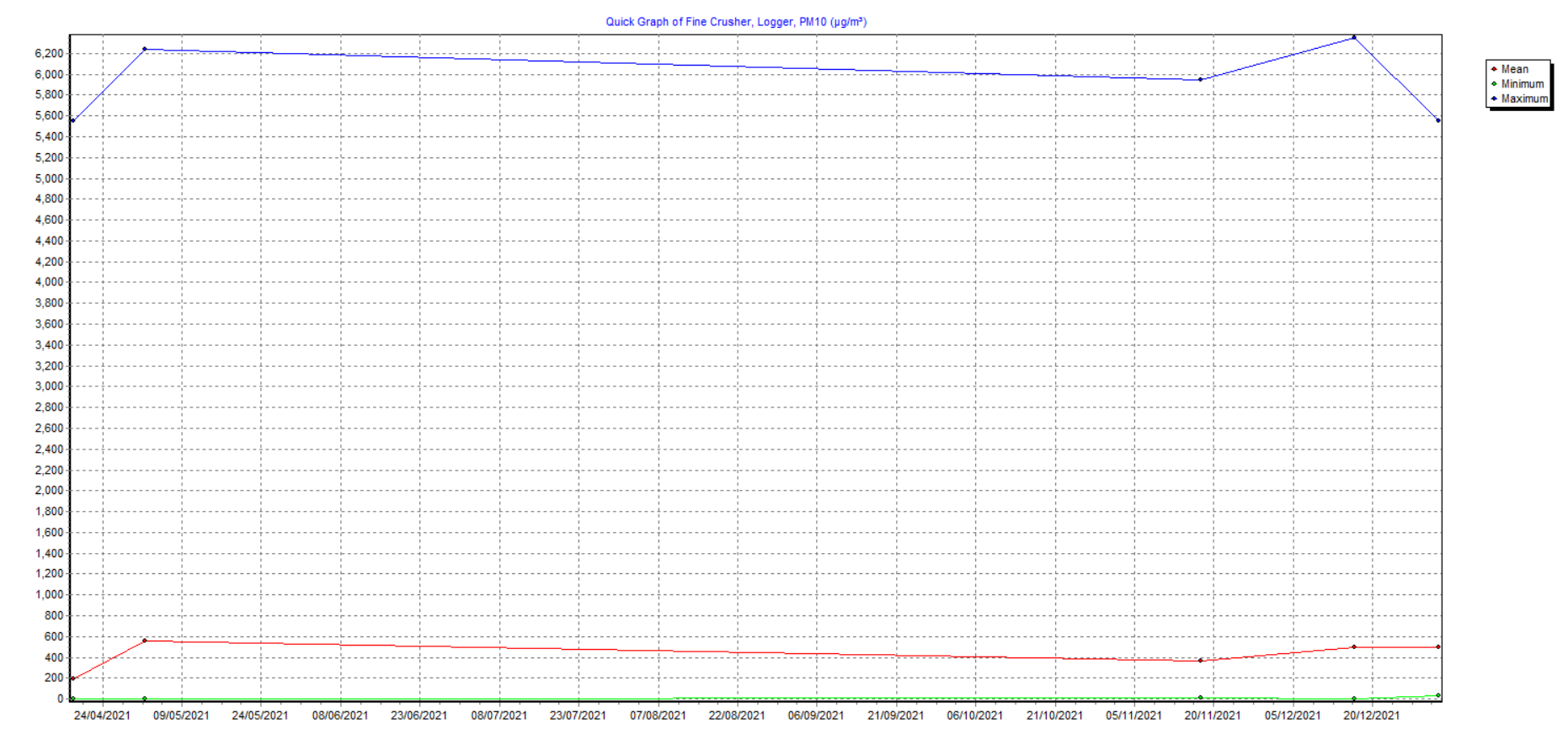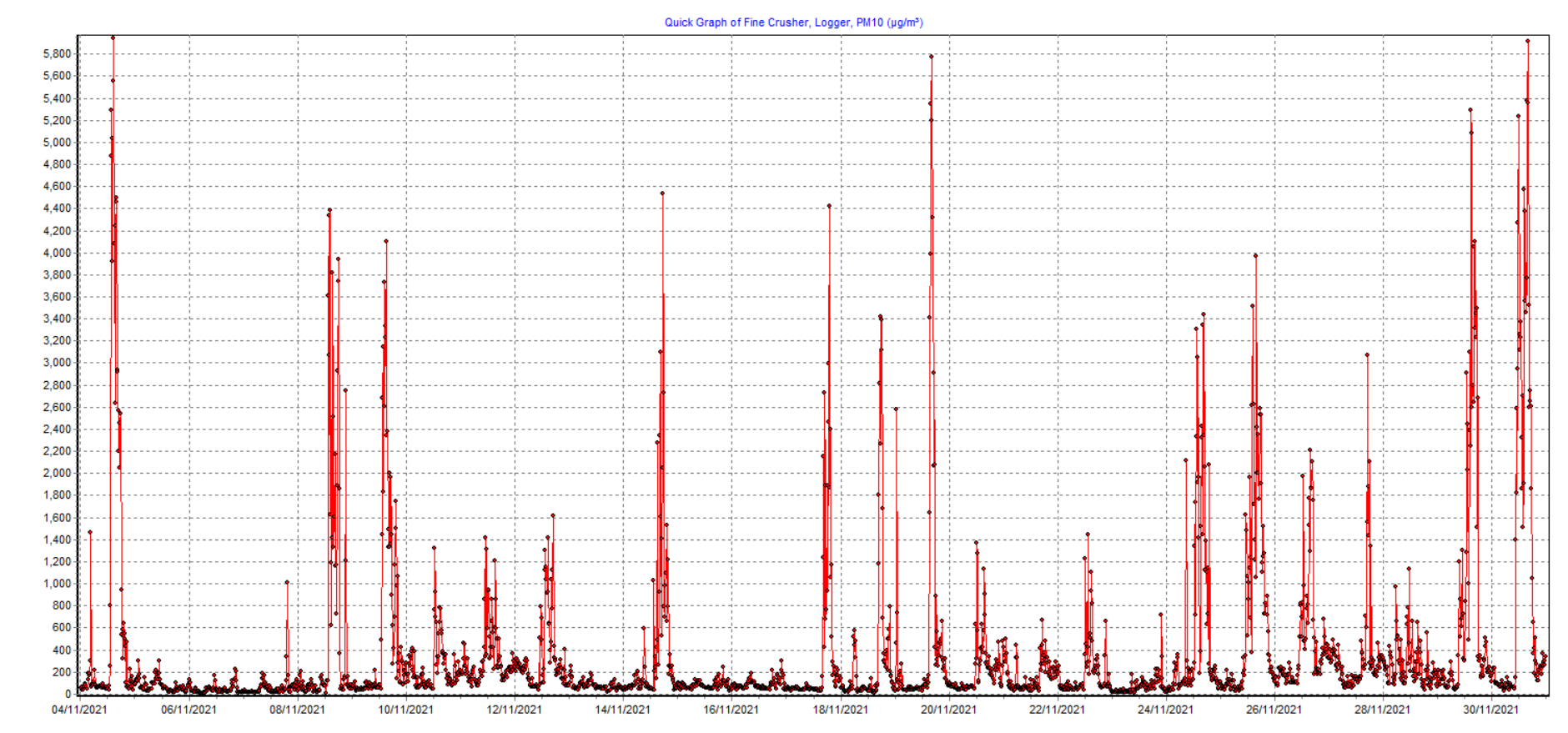How to use the MP-Desktop User and Explorer System Options
Introduction
System Options is the central Administration hub for the configuration and setup of MonitorPro. It's broken down into a number of tabs.
User Settings
These settings are specific to the user and do not affect MonitorPro for other users. The only exception to this is if MonitorPro Desktop is being shared between users on the same physical PC. In this scenario, the Sharing user data option can be used to limit configuration changes affecting other users sharing the same computer.

Default import/export folder - This will set the base location when MonitorPro is interacting with Windows File Explorer, for example when exporting out a file.
Dataset Group Behaviour - When updating Sample Point Groups, Variable Suites and Data Source Families MonitorPro can update all Datasets compiled using these objects, based on the specific changes made (for example adding or removing items). This feature is very useful in mass updating configuration in MonitorPro very quickly. You can define how this feature is enabled, either prompting the user, making the change automatically or never making the change. By default, this setting is set to prompt.
User Login settings - Define if the last accessed database is remembered when you log into MonitorPro.
Show Expanded Quick Start in Toolbar - The expanded Quick Start is an alternative way of navigating MonitorPro output. Typically the quickest way to access output is to choose a Dataset (or Current Dataset) and then choose the type of output. The 'quick start' flips this to choosing the type of output first then selecting the data to include. The option includes the output options to the navigation bar.
Crystal Reports - There are two Crystal Report run times included in MonitorPro, XI and 2013. It's recommended to leave this setting as 2013, however in some cases, if users are having issues exporting reports, changing this setting to XI can potentially be a workaround.
Unicode CSV Export - Where implementations use Cyrillic characters for example, such as in comments, it can be required to use this setting to be able to export these comments correctly.
Explorer Settings
These settings affect some user experiences and items related to the Explorer (MonitorPro folder structure).

Reporting - Crystal Report templates need to be saved in a Reports folder. This setting allows users to define the location of this folder. This can be a folder on the local PC, it can equally be set up to be a network or shared path, so all users can share the same Report templates.
Explorer Settings - Unchecking this removes the Database Folders parent folder in the Explorer.
Calendar Theme - Users can set the theme of the Calendar in MP-Desktop.
Slow Connection Warning - MP-Desktop uses a client-server architecture and will warn a user if their connection to the MonitorPro database is slow (which is on a database server). The limit at which this limit prompts the user can be set here. For very slow connections this can be increased, however, it's recommended to look into why these speeds are so low. The average response times can be checked from Help and About on the main menu.
Default Timeout - When a user interacts with MonitorPro, such as re-running a calculation, a request is sent to the database server to invoke the action. This backend or database process can for very large datasets take extended periods of time and is impacted by a number of factors such as server resources and database size/fragmentation. If a database process takes more than 30 secs the user will be prompted if they wish to continue to wait or cancel the operation. If they retry the timeout is doubled. The initial timeout can be extended here to more than 30 secs on the initial attempt, however, it is recommended to try and break down large operations into smaller more manageable actions initially.
Dynamic Summary - When users create a graph in MP-Desktop, large datasets are initially summarised with a min, avg and max for presentation, when they exceed a set value. This value can be set here, along with a summary period. When a graph is presented as a summary users can drill into each summary period to see the raw data. The example below of a limit set at 1000 data points and a Monthly summary, then the raw data of one of the monthly periods.


Related QAQC - Users have the option to view related QA/QC data when in the Sample Explorer by using this setting.
